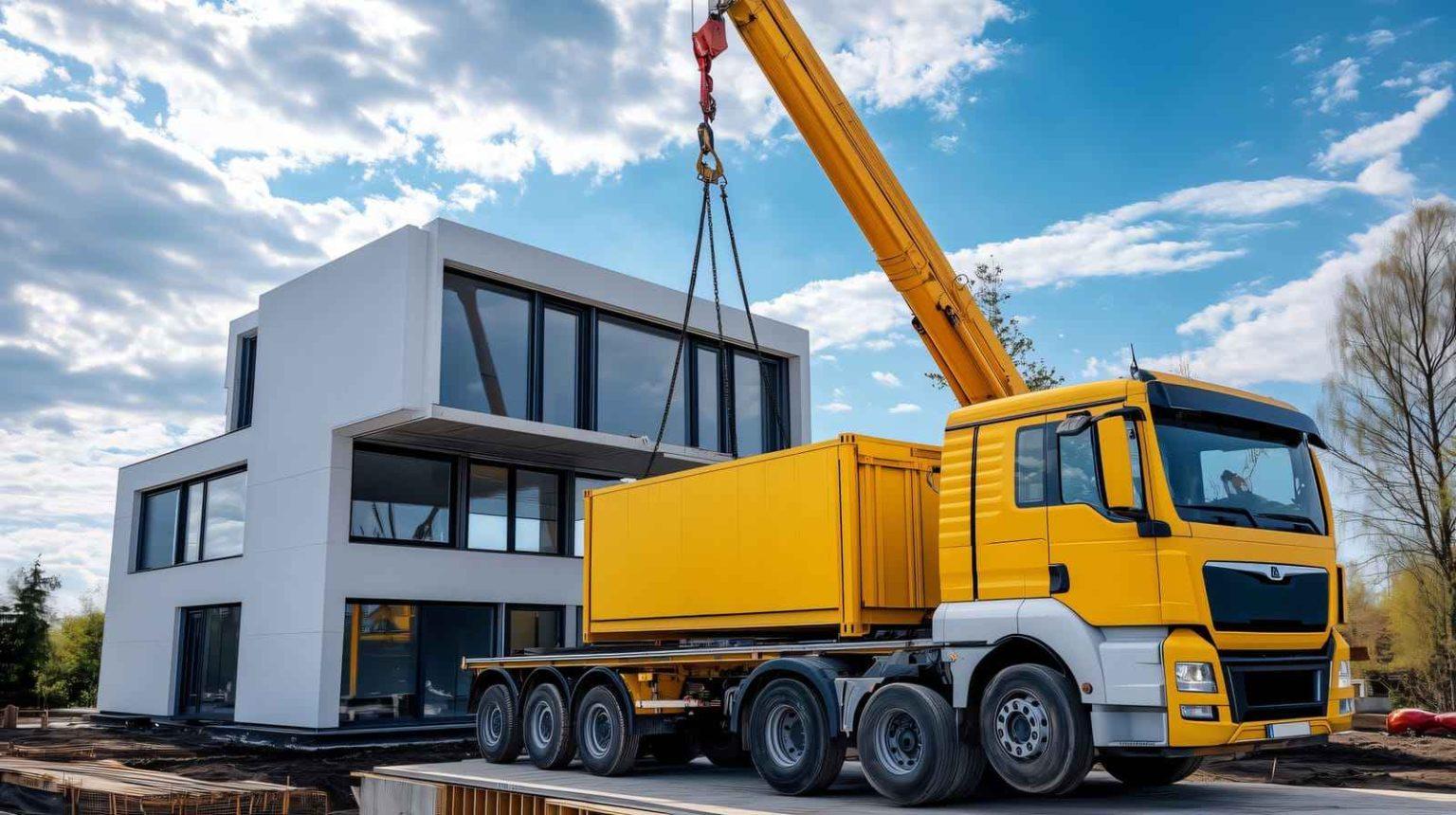Looking for a stylish home that won’t drain your savings? Curious how to turn a shipping container into a warm, modern space? Ready to discover practical routes to cheap container homes that still meet UK rules?

Why People Are Choosing Container Homes
Container homes offer a compelling blend of speed, value, and design freedom. They arrive as strong, steel shells and can be adapted into cosy studios, family homes, or guest annexes in a fraction of the time of a traditional build. For buyers determined to keep costs under control, the path to genuinely cheap container homes is clearer than many expect—provided you plan well and pick reliable UK suppliers.
Beyond the price tag, the appeal also lies in flexibility. You can start with a single 20ft or 40ft module and add more rooms later. With the right insulation, windows, and ventilation strategy, these homes feel like any other high‑quality new build—only faster and often far more customisable.
What Does a Container Home Cost in the UK?
The final price depends on three main elements: the container(s) themselves, the conversion spec (insulation level, finishes, kitchen/bathroom), and on-site costs such as foundations, delivery, and utility connections. The table below outlines typical UK options and starting prices to help you benchmark offers.
| Supplier / Model | What’s Included | From Price (GBP) |
|---|---|---|
| Cabin Depot – 20ft Used Container | Wind & watertight used unit (shell only) | £1,650+ |
| Cabin Depot – 40ft High Cube Used | Extra height, wind & watertight (shell only) | £3,200+ |
| Universal Containers – Studio Conversion | Insulated, windows/doors, electrics fit-out | £25,000+ |
| Universal Containers – 2×40ft Home Shell | Two joined modules, structural cut-outs | £55,000+ |
| Live Off Grid – Galaxy One-Bed | Turnkey unit incl. kitchen/bath; off‑grid options | £49,995+ |
| Container Housing UK – One-Bed Micro Home | Fully fitted home; delivery available UK‑wide | £59,000+ |
| American Caravans Ltd – Container Studio | Fitted studio with bathroom & electrics | £34,995+ |
| Typical Groundworks & Utilities (UK) | Pads/strips, trenching, water/power connections | £8,000–£20,000 |
| Delivery & HIAB/Crane Set (UK) | Transport + lift-in (distance/complexity dependent) | £1,200–£4,000 |
Prices vary by specification, material choices, and region. Expect to pay VAT, delivery, and professional fees (design, structural) on top unless explicitly included.
Where to Buy: Trusted UK Sources
Starting with solid, corrosion‑checked containers is crucial. For shells, browse stock at Cabin Depot. If you want a finished home or a high‑spec conversion, compare reputable specialists:
- Explore UK‑made homes at Container Housing UK.
- See turnkey designs like the Galaxy range from Live Off Grid.
- View studio and home options at American Caravans Ltd.
- Price flexible conversions and bespoke layouts with Universal Containers.
Shortlist a few models, ask for a full spec sheet (insulation type and thickness, U‑values, window/door ratings, MEP details), and request an itemised quote so you can compare like-for-like.
Planning Permission and Building Regulations in GB
In most cases, a home intended for permanent residence will need planning permission. The specifics differ between England, Wales, Scotland, and Northern Ireland, but the broad steps are similar:
- Planning status: A container home is typically considered a building if it is intended as a home and connected to services. Seek pre‑application advice from your Local Planning Authority.
- Design and siting: Massing, overlooking, parking, and access all matter. Sensitive cladding (timber, composite, metal rainscreen) helps a contemporary design sit better in its context.
- Building Regulations: You will need to satisfy structure (Part A), fire (Part B), ventilation (Part F), sanitation (Part G), electrical safety (Part P), and energy efficiency (Part L). In Scotland, ensure compliance with the Technical Handbooks and obtain a building warrant.
- Foundations: Even though a container is relocatable, Building Control will expect suitable foundations—e.g., pad stones or strip foundations sized by an engineer.
- Structural openings: Large windows require steel trimming or frames to maintain container strength. Ask for engineer‑signed drawings.
Design Tips for Genuinely Cheap Container Homes
Getting good value is about smart choices rather than cutting corners. Use these proven tactics:
- Start simple: A single 40ft High Cube often yields the best cost per m². Add a porch or pergola for outdoor living without complicating the structure.
- Insulate for life: Invest in continuous insulation and eliminate thermal bridges. Closed‑cell PIR or rockwool with a vapour control layer pays back in energy bills and comfort.
- Standardise openings: Choose common window sizes and a single door type to reduce fabrication time and cost.
- Pre‑wire and pre‑plumb: Factory pre‑fit for speed and quality. On site, focus on foundations and connections.
- Plan services early: Shorter runs to water/power save money. Consider an efficient electric setup with heat‑pump hot water and panel heaters, or a compact air‑to‑air heat pump.
- Phase your build: Fit the shell and essential rooms first, then upgrade finishes later when budget allows.
Sustainability and Performance
Many buyers like the upcycling story, but performance is what matters day‑to‑day. With proper detailing, these homes can meet or exceed UK energy standards:
- Thermal strategy: Aim for low U‑values and airtightness. Combine mechanical ventilation with heat recovery (MVHR) with good seals to avoid condensation.
- Moisture control: A continuous vapour control layer and ventilated rainscreen cladding protect the steel from corrosion.
- Low‑carbon systems: Pair high‑performance glazing with LED lighting, induction cooking, and rooftop PV if the site allows.
Finance, Insurance, and Resale
Because containers are modular and can be relocatable, lenders and insurers may assess them differently from standard homes.
- Finance: Some high‑street lenders are cautious. Consider specialist self‑build mortgages or personal finance for staged payments. A clear certificate trail (engineering, Building Control sign‑off) helps.
- Insurance: Seek brokers familiar with modular or non‑standard construction. Provide a full spec and security details.
- Resale: Good design, robust insulation, and conventional aesthetics (e.g., quality cladding) widen your resale audience and help valuation.
Local Considerations for Columbus Projects
If your plot in Columbus is tight, modular set‑down with a HIAB can be faster than traditional building methods. Check access routes for a 40ft lorry, confirm crane lift distances, and consult neighbours early to ease the planning path. For sites with services constraints, explore off‑grid add‑ons (batteries, composting WC, greywater) offered by suppliers like those noted above, then transition to mains later when budget or permissions allow.
Next Steps
- Shortlist one shell supplier and two conversion specialists, and request itemised quotes.
- Verify planning viability with a pre‑application meeting.
- Lock in foundations, openings, insulation, and MEP decisions before fabrication.
When you’re ready to price components or compare turnkey models, start with these UK resources:
- Browse container stock at Cabin Depot.
- Compare fully fitted homes at Container Housing UK and American Caravans Ltd.
- Look at lifestyle designs like Galaxy at Live Off Grid.
- Price bespoke conversions with Universal Containers.
With a clear brief and the right partners, you can achieve an attractive, code‑compliant, and genuinely economical container home anywhere in the UK.


